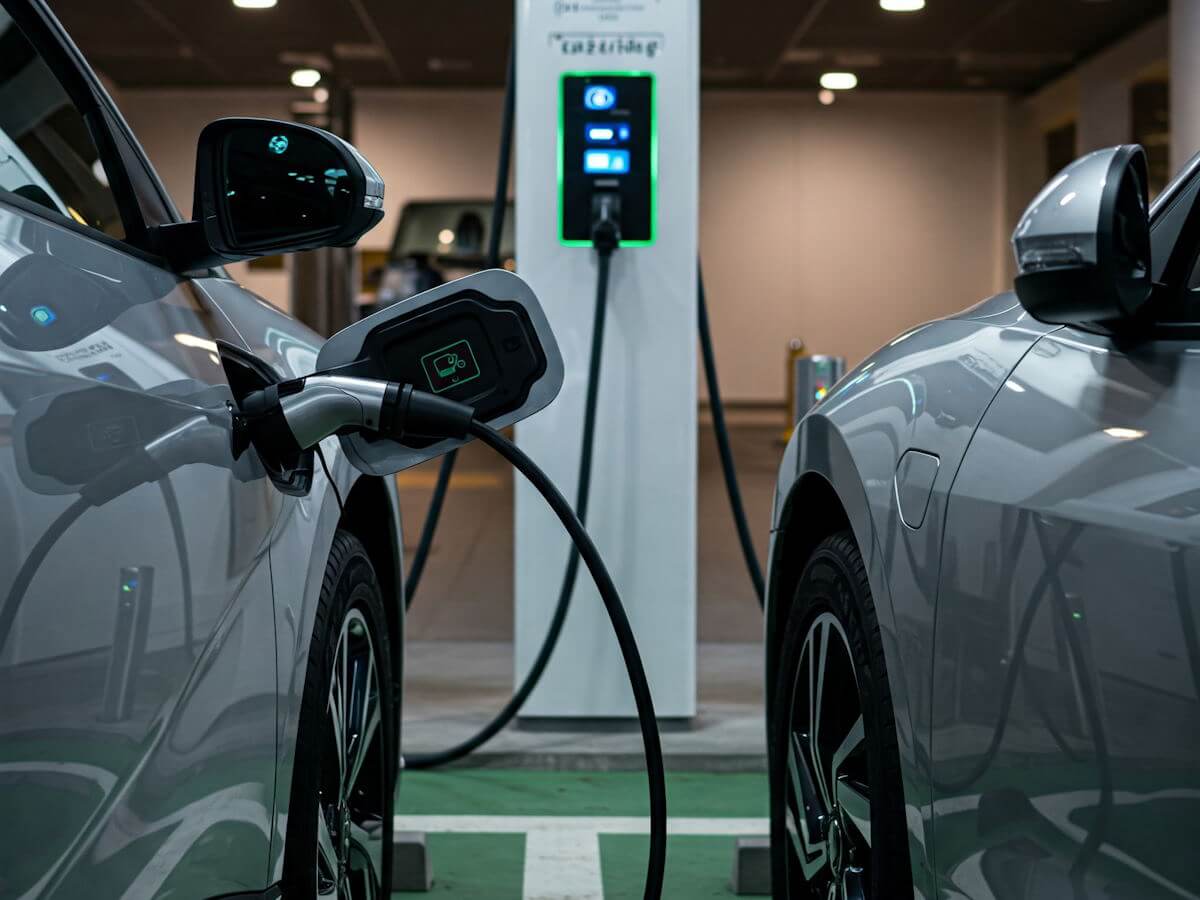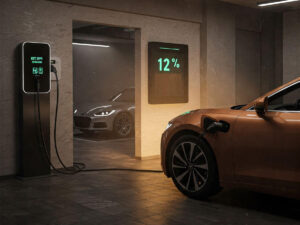Understanding EV Battery Basics
Electric vehicles (EVs) rely predominantly on lithium-ion batteries, which have become the standard due to their high energy density, efficiency, and relatively low weight. These batteries consist of several components, including electrodes made from lithium compounds, electrolytes, and separators. Understanding the chemistry behind these batteries offers insights into their performance and longevity.
The fundamental operation of a lithium-ion battery involves the movement of lithium ions between the anode and cathode during the charge and discharge cycles. The anode typically comprises graphite, while the cathode contains metal oxides such as lithium cobalt oxide or lithium iron phosphate. Battery chemistry plays a crucial role in determining the overall capacity, charge cycles, energy efficiency, and thermal stability of the battery.
Range and longevity are significantly influenced by the type of battery employed and how users interact with their EV. For instance, reducing the charge state to approximately 80% and avoiding complete discharges can greatly enhance battery lifespan. Furthermore, temperature management is essential; extreme heat or cold can degrade battery performance and reduce its overall lifespan. Hence, many modern EVs incorporate thermal management systems to regulate temperature effectively.
Additionally, it is worth noting that not all lithium-ion batteries are created equal. Different manufacturers may use distinct chemistries that impact cycle life and efficiency. Understanding the specific battery type in your electric vehicle can aid in adopting suitable charging habits and maintenance practices. Overall, a solid grasp of EV battery fundamentals will empower users to implement effective strategies for prolonging battery life, ensuring more dependable and efficient vehicle performance.
Optimizing Charging Habits
Charging habits play a critical role in determining the longevity and efficiency of an electric vehicle (EV) battery. By implementing effective charging practices, EV owners can significantly enhance their battery lifespan and overall performance. One of the primary recommendations is to maintain the battery charge between 20% and 80%. This range is often considered the optimal charging level, as it prevents excessive stress on the battery cells, which can occur during full charges and deep discharges. Regularly allowing the battery to dip below 20% or charging it to 100% can lead to accelerated wear and degradation over time.
Another effective practice is to schedule charging during off-peak hours. Many electric utility companies offer lower rates at night or during periods of low demand. By taking advantage of these lower rates, EV owners not only save on electricity costs but also help balance the demand on the power grid, contributing to less environmental impact. This method can effectively encourage the use of renewable energy sources, ultimately benefiting both the user and the planet.
It is also advisable for EV owners to avoid using fast chargers frequently, as these can generate excess heat and stress the battery. While fast charging is convenient, incorporating regular charging from a Level 2 charger can significantly prolong battery health. Additionally, utilizing timers and smart charging features available in many modern EVs can further enhance charging efficiency by ensuring that the battery remains within the optimal charge range.
In summary, cultivating good charging habits is paramount for anyone looking to maximize the lifespan of their electric vehicle battery. By adhering to recommended charge levels, scheduling off-peak charging, and minimizing the use of fast chargers, EV owners can ensure their vehicle remains efficient and reliable for years to come.
Temperature Management for Your Battery
Effective temperature management plays a critical role in extending the battery life of electric vehicles (EVs). The performance and longevity of lithium-ion batteries, commonly used in EVs, are significantly influenced by temperature variations. Extreme heat can accelerate battery degradation, reducing its overall efficiency and lifespan. Conversely, frigid temperatures can diminish the battery’s capacity, resulting in reduced driving range. Understanding how to manage your EV battery’s temperature can help optimize its performance and longevity.
When it comes to high temperatures, parking in shaded areas or garages can be beneficial, as this helps prevent the battery from overheating. Additionally, it is advantageous to keep the vehicle’s climate control system in mind. Pre-conditioning the battery while the vehicle is still plugged into a charging station helps ensure it attains an optimal temperature before you start driving. By doing so, the battery remains in a more efficient operating range, which can maximize the driving range per charge.
On the other hand, in cold conditions, it is vital to be aware that the battery may not perform at its peak capacity. Using thermal management features, if available, can aid in preheating the battery before departing. You may also consider limiting the use of high-energy features like heating seats and steering wheels, as these can draw substantial power from the battery. Maintaining a moderate interior temperature is essential as well, as it minimizes battery strain.
Ultimately, understanding how temperature affects your EV battery is key to enhancing its efficiency and lifespan. With a few mindful practices, such as parking in appropriate locations and judicious use of climate controls, you can significantly contribute to the health and performance of your electric vehicle’s battery.
Driving Style Adjustments
Driving habits play a significant role in determining the efficiency and longevity of an electric vehicle’s (EV) battery life. A deliberate approach to driving can result in not only a smoother ride but also a more sustainable utilization of battery power. To start, avoiding rapid acceleration is crucial. When an EV accelerates quickly, it draws a considerable amount of power from the battery, leading to a rapid depletion of its charge. Therefore, gentle acceleration can help in conserving energy, ensuring that the battery remains operational for a longer period.
In addition to acceleration, hard braking is another driving behavior that can negatively impact battery life. Frequent hard stops require more energy to regain the speed lost during braking, ultimately putting additional strain on the battery. Adopting a more anticipatory driving style—by watching traffic flow and gradually decelerating—can help reduce the frequency of hard braking. Additionally, many EVs feature regenerative braking systems that recover energy during braking, but this system is most effective when braking is smooth and controlled.
Maintaining steady speeds contributes significantly to energy efficiency. Frequent fluctuations in speed can lead to increased energy consumption. When driving, utilizing features such as cruise control can help maintain a consistent speed, optimizing energy use from the battery. Furthermore, when driving on highways, keeping a steady pace and avoiding unnecessary lane changes can also promote battery conservation.
Incorporating these driving style adjustments not only enhances the driving experience but also plays a crucial role in preserving battery health. By making small changes to one’s driving habits, EV owners can extend the life of their vehicle’s battery, ensuring it remains functional and efficient for years to come.
Maintaining Your EV’s Overall Health
Maintaining the overall health of your electric vehicle (EV) is crucial for ensuring battery longevity and optimizing performance. Regular maintenance routines are essential in preventing issues that could decrease energy efficiency and shorten the lifespan of your EV battery. One of the primary aspects of EV maintenance is tire management. Properly inflated tires not only enhance road safety but also improve the vehicle’s range by minimizing energy consumption. It is recommended to routinely check tire pressure and tread depth to ensure they are in optimal condition.
The braking system also plays a significant role in the performance of an electric vehicle. Many EVs are equipped with regenerative braking systems that recapture energy when the brakes are applied. Ensuring that the brakes are in good condition, along with the brake fluid and pads, is vital to maximize this energy recovery feature. Regular brake inspections can help identify potential issues before they lead to costly repairs and can significantly aid in maintaining battery health.
Additionally, software updates are an integral part of maintaining an electric vehicle’s efficiency. Many manufacturers provide updates that enhance the vehicle’s performance, improve battery management systems, and optimize energy consumption. Staying current on these updates can lead to more effective use of the EV’s resources and, consequently, better battery life. Drivers should regularly consult their vehicle’s owner manual for any recommendations on maintenance schedules and software upgrades.
In summary, regular maintenance is paramount to supporting the health of your electric vehicle and its battery. By taking proactive measures such as managing tire pressure, ensuring brake system integrity, and performing necessary software updates, owners can prolong the lifespan of their EV battery while also improving overall performance and energy efficiency.
Using Regenerative Braking Effectively
Regenerative braking is a vital feature in electric vehicles (EVs) that contributes to energy conservation and extends battery life. This technology captures the kinetic energy usually lost during braking and redirects it to recharge the vehicle’s battery. Understanding how to use regenerative braking effectively can significantly improve the efficiency of your EV and enhance your driving experience.
The mechanics behind regenerative braking involve the electric motor functioning as a generator. When the driver applies the brakes, the motor slows down the wheels, converting kinetic energy into electrical energy. This recovered energy is then stored back in the battery for later use, making regenerative braking not only environmentally friendly but also cost-effective.
To maximize the benefits of regenerative braking in daily driving, it’s essential to adopt specific techniques. One effective approach is to anticipate stops and decelerate gradually rather than relying heavily on the brake pedal. By easing off the accelerator in advance of a stop, you can enable the regenerative braking system to engage early, facilitating a smoother transition and capturing more energy. Additionally, many EVs allow drivers to adjust the intensity of regenerative braking. Choose a higher setting when driving in urban areas with frequent stops, as this will enhance energy recovery in these conditions.
Another strategy to optimize regenerative braking involves using the vehicle’s onboard energy monitoring systems. Many electric vehicles provide real-time feedback on energy usage, allowing drivers to understand their braking habits better. This insight can help them adjust their driving behaviors and promote energy-efficient practices. Over time, consistent use of regenerative braking can contribute to improved battery lifespan and lower overall operating costs. As with all driving techniques, practice and familiarity with your EV’s specific regenerative features will lead to the best results.
Minimizing Accessories and Climate Control Usage
One of the critical factors affecting the battery life of electric vehicles (EVs) is the excessive use of accessories and climate control systems. These components, while enhancing comfort and convenience, can significantly draw energy from the battery, leading to a decrease in overall driving range. To optimize your EV’s battery performance, it is essential to understand how these systems work and implement strategies to manage their usage effectively.
Climate control systems, which include heating, ventilation, and air conditioning (HVAC), are among the most power-hungry features of an EV. For instance, using the heater or air conditioning at high settings can result in a substantial battery drain. To mitigate this, consider utilizing seat heaters instead of the cabin heating system, as they consume less energy and directly warm the occupants without affecting the entire vehicle’s climate. Additionally, pre-conditioning your EV while it’s still plugged in can help warm or cool the interior before you start driving, thus reducing energy consumption from the battery during your journey.
Moreover, carefully managing the use of other electrical accessories such as infotainment systems, heated seats, and even exterior lights can significantly impact your vehicle’s efficiency. Limiting the use of high-power accessories, especially when you are aware of longer trips where battery life is critical, can help extend your driving range. When not needed, features like Bluetooth connectivity, navigation displays, and entertainment systems should be turned off to conserve battery.
In essence, reducing the reliance on luxury features and climate control can positively affect your EV’s battery longevity. A balance between comfort and energy efficiency can be achieved, ensuring that you extend your driving range while enjoying a practical level of comfort.
Plan Your Trips Wisely
Effective trip planning is crucial for optimizing the battery life of your electric vehicle (EV). One of the primary considerations should be the route you choose; some roads may be more taxing on your battery than others. Elevation changes, for instance, can significantly affect energy consumption. When planning a journey, consider routes that minimize steep hills or maximize downhill travel, which allows for regenerative braking to replenish some battery power as you descend.
Traffic conditions are another important factor. Frequent stopping and accelerating in congested areas can drain the battery faster than maintaining a steady speed. Utilize traffic apps and navigation tools that provide real-time updates to avoid rush hours and congested routes whenever possible. This approach not only saves energy but also enhances the overall driving experience.
Moreover, be mindful of potential charging stops along your route. Identifying charging stations ahead of time can alleviate range anxiety and allow for strategic planning of charging periods. Incorporating planned stops into your travel itinerary can minimize stress on the battery, as you will not be compelled to rush or push your EV beyond its limits. Some apps even allow you to plan trips that automatically incorporate charging stations, making it easier to ensure you always have enough power for your journey.
Lastly, consider the climatic conditions that may impact battery performance. Cold or hot weather can affect battery efficiency, necessitating additional energy usage. Planning trips during milder temperatures can further protect battery longevity. By factoring in elevation, traffic conditions, opportunities for charging, and weather, you can significantly enhance your electric vehicle’s operational efficiency, thereby extending its battery life effectively.
Stay Informed About Battery Technology Advances
As the electric vehicle (EV) market continues to expand, staying informed about the latest battery technology advances is crucial for optimizing your vehicle’s performance and longevity. The evolution of battery technology directly impacts not only the efficiency and range of EVs but also introduces new strategies for extending battery life. Potential advancements, such as solid-state batteries and lithium-sulfur alternatives, promise enhanced energy density, which could lead to improved driving ranges and reduced charging times.
Understanding these innovations can empower EV owners to adopt practices that maximize the lifespan of their batteries. For instance, some newer battery technologies may feature improved thermal management systems, which are essential for maintaining optimal charging and discharging temperatures. By being aware of these developments, users can adjust their usage habits to align with the capabilities of the latest battery designs, thereby enhancing the overall performance of their electric vehicles.
Moreover, following trends in battery recycling and sustainability can provide insights into maintaining battery health. As the industry shifts toward greener practices, there may be new recommendations for lessening environmental impact while prolonging battery life. Staying engaged with industry news, research reports, and developments from manufacturers can help vehicle owners remain at the forefront of best practices regarding their battery systems.
Joining forums or online communities focused on EV technologies can also offer valuable perspectives from fellow EV users. By sharing experiences and tips regarding the impact of various battery technologies, users can create a collective knowledge base that benefits all members. Therefore, continual education on battery advancements is a wise investment for anyone invested in electric mobility.




